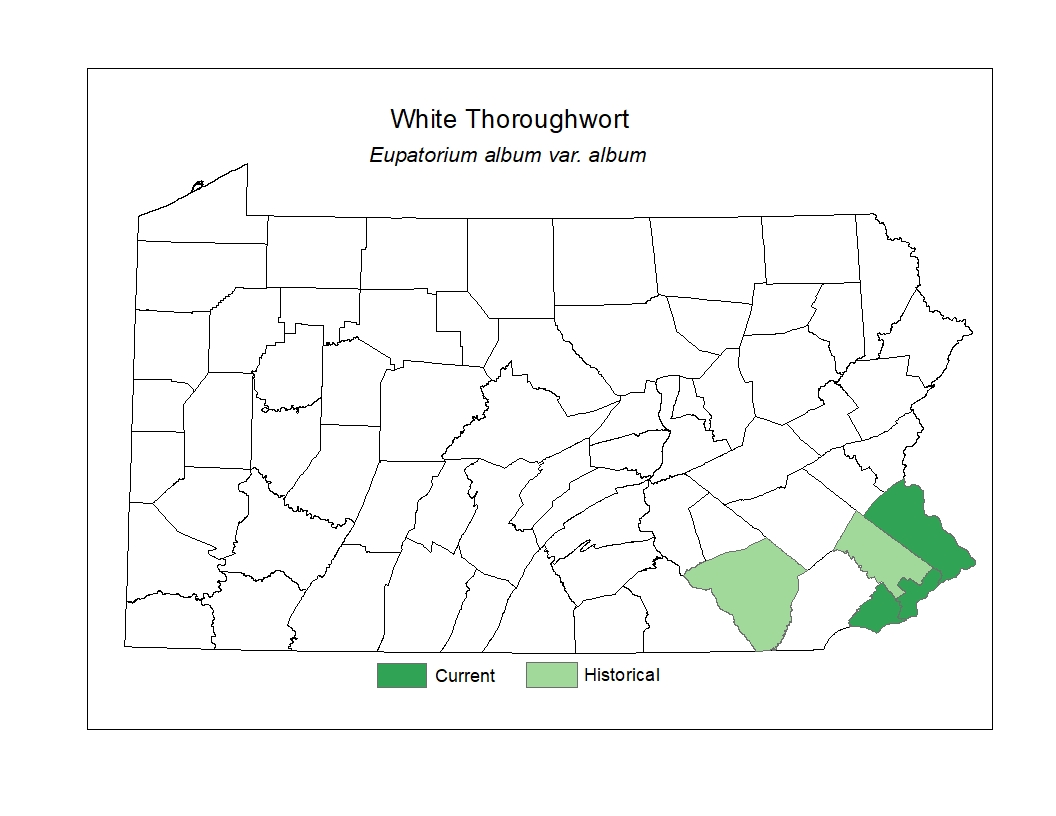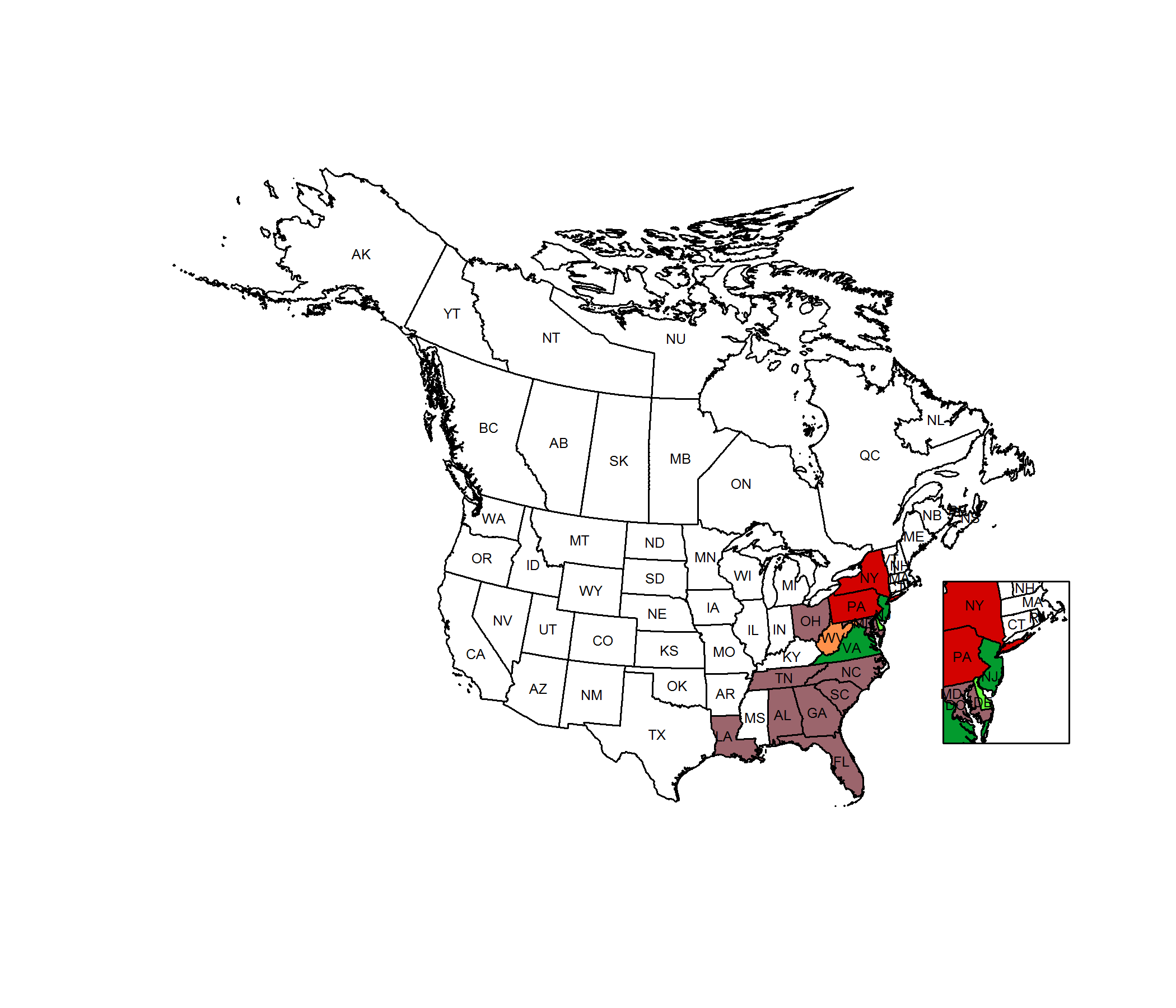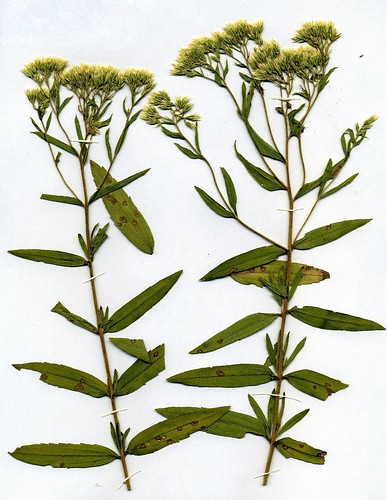 Species Factsheets
Species Factsheets
Eupatorium album var. album
White Thoroughwort
State Status:
PBS Status: Pennsylvania Endangered (PE)
Federal Status:
Global Rank: G5T5
![]() rank interpretation
rank interpretation
State Rank: S1
Description
White Thoroughwort is an herbaceous perennial with a hairy stem that may grow to 1 m in height. The leaves are oppositely arranged, unstalked or nearly so, narrowly elliptic to lance-shaped, with 3 prominent veins oriented from base to tip, toothed on the margin, resin-dotted and more-or-less hairy, to 10 cm in length and to 2.5 cm in width, and obtuse to rounded at the tip. The white flowers, appearing from August to October, are individually minute and are aggregated in small clusters (“heads”) at the tips of the branches, which tend to reach the same height and give the overall plant a flat-topped appearance. Each individual head has numerous overlapping white and hairy scales, or bracts, below where the flowers are attached. In this species the bracts of the head, especially the upper ones, have an exceptionally long and pointed white tip as compared with the lower bracts, a feature not found in most of the other species of the genus Eupatorium. The fruits are minute, dry, and 1-seeded, with a tuft of hairs at the tip that promotes wind dispersal.
Rank Justification
Critically imperiled in the nation or state because of extreme rarity (often 5 or fewer occurrences) or because of some factor(s) such as very steep declines making it especially vulnerable to extirpation from the state.
Habitat
It grows in openings, clearings, rights-of-way, thickets, and open woods.
Survey Dates
Flowers July - August; fruits late August - early October
Distribution
White Thoroughwort ranges from Connecticut to Indiana and south into Florida and Louisiana. In Pennsylvania, it represents a southerly species and has been documented historically in the southeastern counties.

Management
The viability of populations of White Thoroughwort often requires maintaining early successional conditions and controlling invasive species. Active management, such as periodic mowing, may be needed to create the proper successional conditions and controlling invasive species. Active management, such as periodic mowing, may be needed to create the proper successional stage and ecological conditions for this species to thrive.
Conservation Status Map


NatureServe. 2017. NatureServe Explorer: An online encyclopedia of life [web application]. Version 7.1. NatureServe, Arlington, Virginia. Available https://explorer.natureserve.org.
- NatureServe. 2018. NatureServe Explorer: An online encyclopedia of life [web application]. Version 7.1. NatureServe, Arlington, Virginia. Available at https://www.natureserve.org/explorer
- Pennsylvania Natural Heritage Program. 2018.
- Rhoads, A.F. and W.M. Klein, Jr. 1993. The Vascular Flora of Pennsylvania. American Philosophical Society, Philadelphia, Pennsylvania. Rhoads, A.F. and T.A. Block.
- 2007. The Plants of Pennsylvania: An Illustrated Manual. 2nd edition. University of Pennsylvania Press, Philadelphia, Pennsylvania.







